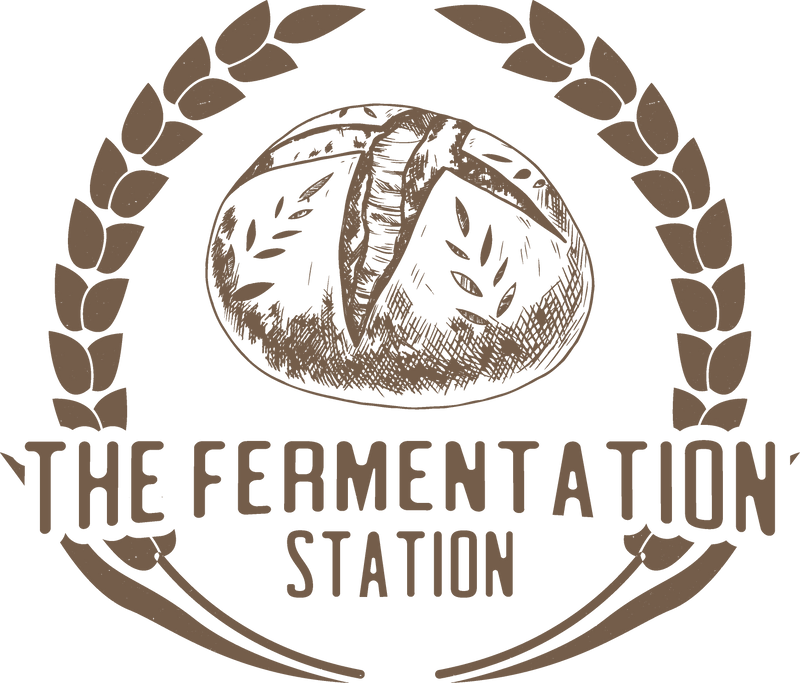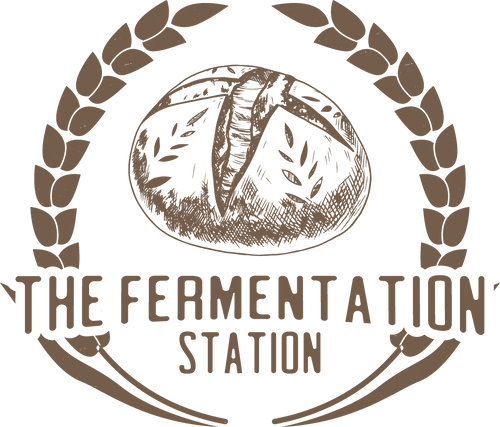Sourdough Bread: The Art of Traditional Baking
Posted on January 25 2024,
What is sourdough?
Sourdough is a type of bread that is leavened, or made to rise, through a natural fermentation process. It's made with a sourdough starter, which is a mixture of flour and water that has been fermented with wild yeast and bacteria. This mixture is used in place of commercial yeast to make the bread rise and is also responsible for the tangy, sour flavour that sourdough bread is known for.
Sourdough bread has a denser, chewier texture compared to other types of bread and is often considered to be more nutritious due to the extended fermentation process. This process also contributes to the unique flavor profile of sourdough bread, which is the result of the interaction between the wild yeast and bacteria in the sourdough starter.
Sourdough bread has been around since ancient times, when people first started baking bread using a mixture of flour and water that had naturally fermented over time. This mixture, known as a sourdough starter, was kept alive and used to make bread for generations. Can you imagine having a sourdough starter that's been passed down in your family for hundreds of years? Talk about a slice of history in every bite!
The resurgence of an ancient form of baking
Have you ever wondered why sourdough bread has been around for thousands of years? Or why has it become so popular in recent years? With COVID-19 stay-at-home orders and closed bakeries, people turned to sourdough bread making as a way to pass the time and feel a sense of accomplishment. And who can blame them? There's something so satisfying about making your own bread from scratch. With the pandemic causing shortages and disruptions in the food supply chain, many people started baking their own bread as a way to ensure that they have a steady supply of fresh, nutritious food. Baking your own bread also allows you to control the ingredients and make healthier choices, as many store-bought breads contain preservatives and additives that are not good for your health. With the rise of the slow food movement and a desire for more natural and wholesome ingredients, sourdough bread has become the bread of choice for many people.
Baking sourdough bread also became a way for people to connect with others, even from a distance. With the rise of social media, sourdough enthusiasts formed online communities to share tips, recipes, and pictures of their latest creations. It's like a virtual bake-off, and it was a fun way to feel a sense of camaraderie during isolated times.
Having a sourdough starter is a little like having a pet. You need to feed it regularly, keep it at the right temperature, and watch it grow. But the end result is totally worth it. Your starter will become a living, breathing thing that you can use to make countless loaves of sourdough bread.
It can be a slow and methodical process. It requires patience, attention to detail, and a love of science. But don't be intimidated! It's a fun and rewarding experience that will make you feel like a true artisan. You'll mix, knead, shape, and bake your bread, all while watching the magic of the sourdough starter come to life. The beauty of sourdough bread making is that there's always room for creativity. You can add different flours, spices, and toppings to create your own unique loaf. And with each bake, you'll learn more about your starter and how to get the best results.
Sourdough vs. mass produced bread

The difference between normal bread and sourdough bread lies in the way they are leavened, or made to rise. Normal bread is made with commercial yeast, a type of yeast specifically bred for baking, which ferments quickly and results in a soft, fluffy texture with a mild flavour. On the other hand, sourdough bread is made with a sourdough starter, a mixture of flour and water that has been fermented with wild yeast and bacteria. The sourdough starter is used in place of commercial yeast and results in a denser, chewier texture and a tangy, sour flavour. The fermentation process of sourdough bread takes longer than that of normal bread, but it produces a more nutritious and flavourful loaf.
Baking with sourdough also offers many health benefits. The slow fermentation process used in sourdough bread making results in a lower glycemic index than other types of bread. This means that sourdough bread is a more stable source of energy and less likely to cause spikes in blood sugar levels. In addition, the lactic acid produced during fermentation makes the bread more easily digestible for people with gluten sensitivities.
Making your own sourdough bread is also a fun and rewarding experience. You'll get to play with the dough, watch it rise, and smell the delicious aroma of fresh bread baking in the oven. It's like a science experiment, art project, and baking session all rolled into one. So, why not give it a go?







